Such spots are precious to us camera trappers too.
Local focal points.
As friend Katie called out in her comment on the previous post:
"It's like the equivalent of a UV light for moths, or an isolated nectar patch for butterflies. It draws in the critters like crazy."
Well said.
So, let's talk about another concept well known to Lepidopterists - Phenology.
Which, in essence, is the study of seasonality.
When do flowers bloom? Butterflies emerge? Birds migrate? Deer mate? And what factors contribute to the timing?
If you study such subjects and questions, you're a Phenologist.
And in a second round of sets at the little seep, the cam caught some fine examples for us.
First up - the bucks moved in. Previously, only doe and fawn black-tailed deer were caught on the cam. But with the beginning of rut, the shiny-antlered bucks started showing up as well.
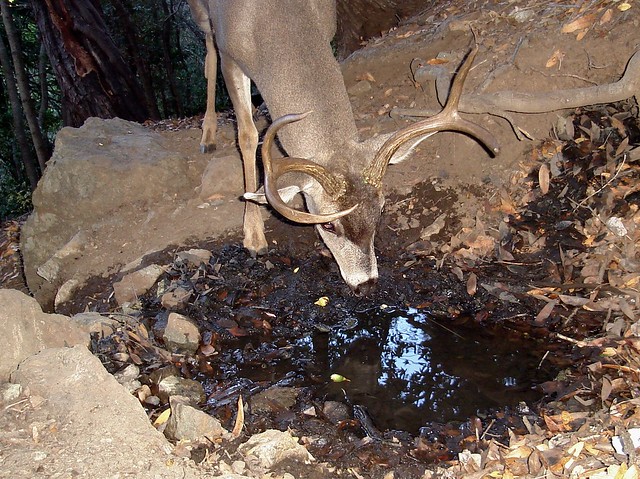
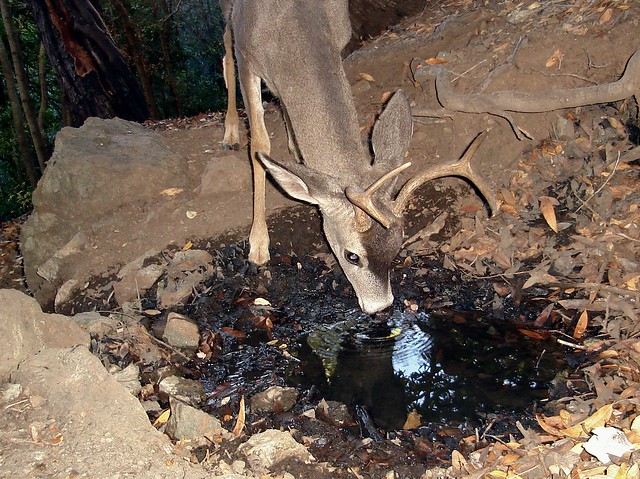
As you can see, I decided to try a lower angle.
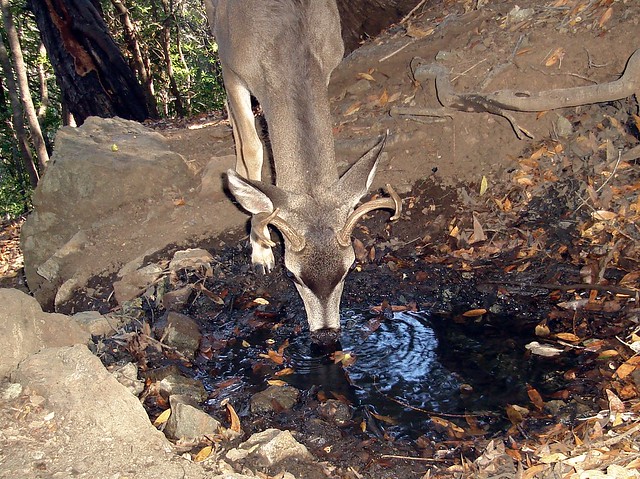
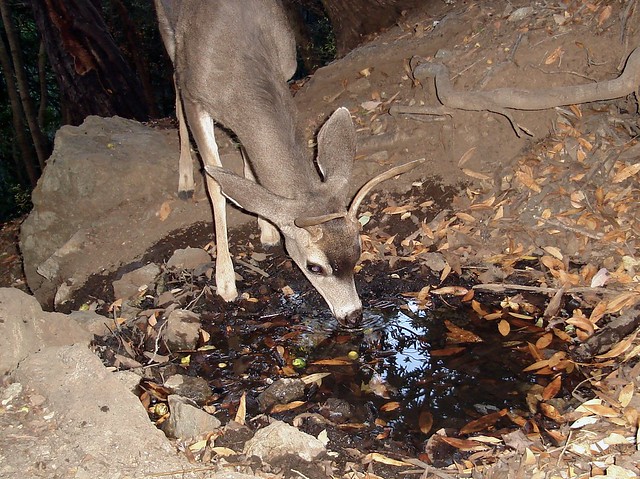
Along with the barrage of bucks, 3 seasonal birds also arrived - hermit thrush, varied thrush and American robin.

Hermit thrushes and a junco
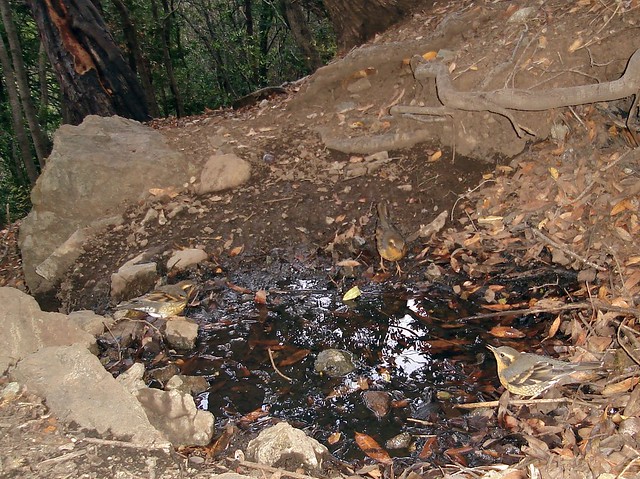
Varied thrushes
The three migratory thrushes overwinter in the Santa Cruz Mountains, feasting on acorns and madrone, manzanita and toyon berries.
And they need water to drink and bathe too.

American robins
But they best watch their backs, because the local chicken-hawk must have heard they're in town.
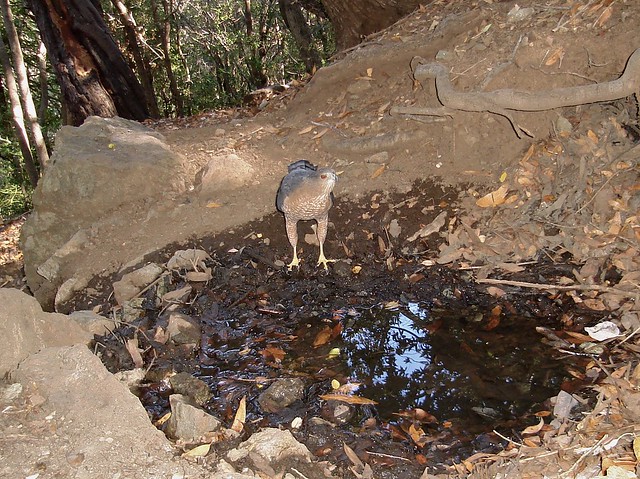
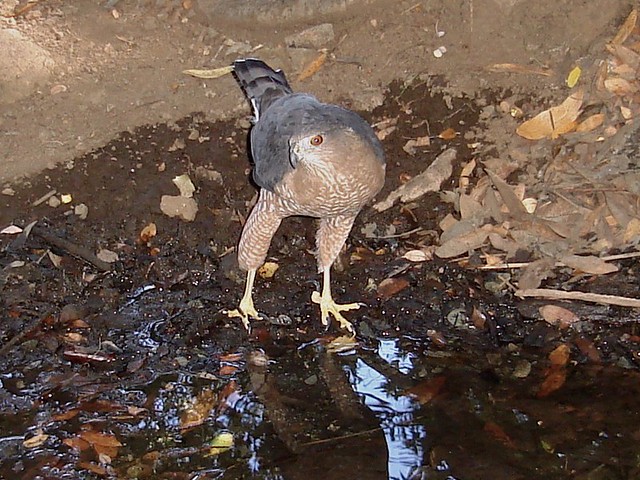 Cooper's Hawk - death from above for little forest fowl, and a bird now oft seen in suburbia
Cooper's Hawk - death from above for little forest fowl, and a bird now oft seen in suburbiaSo, there you go. A taste of Mammalogy Phenology and Ornithology Phenology to go with your turkey leftovers.
And another sip of seep.
====
References:
- Wikipedia - Phenology
- Wikipedia - Chickenhawk (bird)
- Wikipedia - Rut (mammalian reproduction)
- Nature of a Man (this blog) - Hoping for Springs Eternal
- Nature of a Man (this blog) - Going Buck Wild

I rarely see adult Cooper's or sharp-shinned hawks with the gray-blue back and the rufous-barred chest but I often see the plainer juveniles which I can't tell apart. Makes me wonder if the adults are more cautious about showing themselves. Did your Cooper's drink or take a bath at the seep?
ReplyDeleteI'm actually becoming convinced they aren't actually 2 different species, but a secret conspiracy by the ABA to allow pro bird nerds to mock us.
DeleteThe Cooper's visited to drink - there's a final photo 30 seconds later of it leaving dry, and there are no shake spatters on the rocks.
Thanks for the mention. When the geneticists finally have their way with the hawks, there'll probably be 3 species covering 15 subspecies and a couple female andromorphs (or juvenile morphs) thrown in to the mix (- I'm making up that last part).
ReplyDeleteSomeday I might have to pick your brain on selecting camera spots. I have failed so hard at it.
ReplyDeleteI like your ABA conspiracy theory, those buggers still drive me crazy.
Not just suburbia: cooper's hawks nest and rear their young in Golden Gate Park.
ReplyDelete